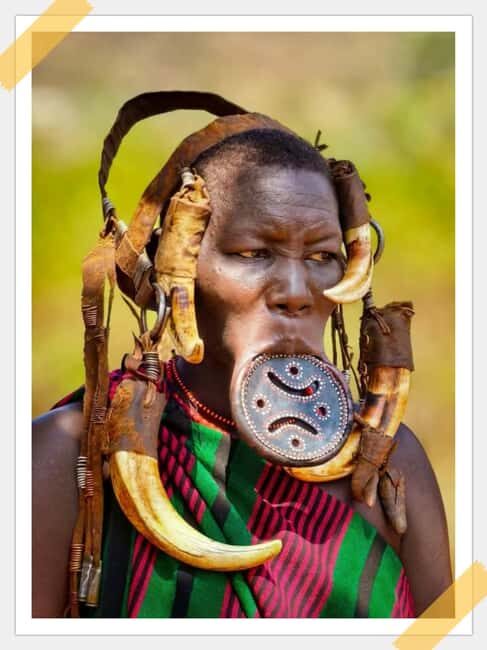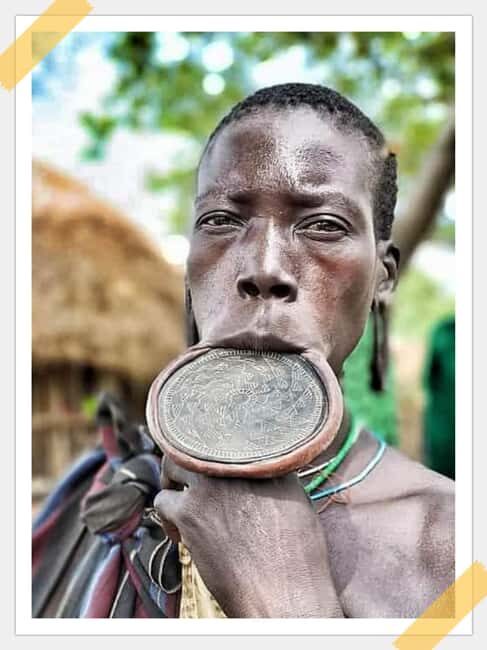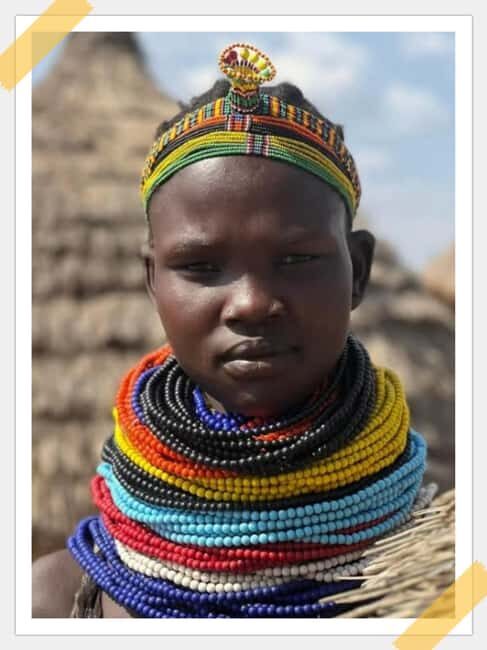Exploring Ethiopia’s Omo Valley with the 9-Day Surma & Tribes Photography Tour from Jinka
This 9-day tour offers a fascinating glimpse into Ethiopia’s remote Omo Valley, taking travelers through vibrant tribal communities like the Mursi, Surma, and Karo. Designed for those passionate about culture, photography, and off-the-beaten-path adventures, this trip promises many memorable moments. We’re particularly drawn to the chance to photograph the striking body decorations and rituals, the opportunity to explore less-visited villages, and the balanced mix of camping and hotel stays that keeps the experience authentic yet comfortable.
That said, the tour does involve long drives across rugged terrain and basic camping conditions, which may not suit everyone. Those prepared for adventure, cultural sensitivity, and some physical activity will enjoy what’s on offer. If you’re seeking an immersive, educational journey into Ethiopia’s tribal diversity — and aren’t bothered by remote locations or rustic accommodations — this tour is likely to be a fantastic fit.
Key Points:
Authentic Cultural Encounters: Visit multiple tribes and witness their unique customs.
Photographic Opportunities: Capture compelling images of traditional decorations and rituals.
Remote Exploration: Venture into less-visited areas of the Omo Valley for a more genuine experience.
Balanced Accommodation: A mix of camping and lodging for comfort and immersion.
Long Travel Days: Expect extended drives on rough roads, essential to reach these remote locations.
Cultural Respect Needed: Interactions require sensitivity and awareness of local customs.
An In-Depth Look at the 9-Day Omo Valley Photography Tour

Starting from Addis Ababa, this journey truly begins once you arrive in Jinka, a gateway to some of Ethiopia’s most captivating tribal scenes. You’ll be greeted at the airport and check into a local hotel before heading out to visit an Ari village in the afternoon. Here, you’ll get a gentle introduction to local lifestyles, seeing how they craft their tools, make traditional alcohol, and showcasing their handicraft and iron smith skills. This initial stop is valuable for setting the scene, offering a softer start before jumping into more remote and visually striking tribal communities.
You can check availability for your dates here:Day 1: Jinka and Ari Village
The visit to the Ari is not just a cultural introduction but also a chance to observe daily life in a relatively accessible community. The guides usually share stories about the tribe’s traditions, and you might get some great photos of local artisans and families. Staying overnight at a hotel in Jinka provides some rest before the adventure intensifies.
Looking for more options in Omorate? We've reviewed plenty of other experiences.
Day 2: Jinka to Hana Mursi
The drive to Hana Mursi takes you into the heart of the Bodi Tribe’s territory, with stops at viewpoints providing sweeping vistas of the landscape—these are perfect for landscape shots and gaining context for the journey. Upon arrival, you set up camp, giving you a taste of the rugged outdoor life. Visiting the Mursi (or Bodi) village in the late afternoon offers the chance to photograph their iconic lip plates and body scarification, which are among the most recognizable tribal images worldwide.
Authentic insights from reviews highlight the experience: “We loved the way the guides helped us approach with respect, which made interactions more genuine,” and “Camping here means waking up in the middle of nowhere, but it’s part of the adventure.” This segment is ideal for photographers eager to capture authentic moments in natural settings.
Day 3: Hana Mursi to Surma Kibish
Early morning visits to cattle camps give a glimpse into the pastoral lifestyle that defines many communities here. Watching herders with their cattle creates a chance for candid shots and insight into the vital role livestock plays. After breakfast, the journey continues towards Kibish, crossing stunning viewpoints and landscapes that lend themselves to dramatic photography.
Arriving late afternoon, you’ll set up camp among the Surma tribespeople. This area is renowned for their ornate body painting, scarification, and decoration with flowers and natural objects. Spending the night camping in such remote locations means you’re truly part of the landscape and the community.
Day 4: Surma Tribe Photography Day
This day is dedicated to capturing the Surma tribe’s vivid face and body paintings, often achieved through intricate scarification and adornment. If luck is on your side, you might witness a traditional stick fight, a seasonal event full of energy and symbolism. The Surma are known for their ornate decoration rituals, which make for compelling images — vibrant, colorful, and deeply meaningful.
Guests often comment on the raw beauty of these moments: “The Surma’s decorations are unlike anything I’ve seen, and being able to photograph their rituals felt truly special.” The camping experience continues, with a chance to reflect on the day’s powerful visuals.
More Great Tours NearbyDay 5: Surma to Nyangatom
Early breakfast starts your journey to the Nyangatom territory, crossing the Omo River over a newly built bridge—an engineering feat in a remote area. As you travel through Omo National Park, wildlife sightings such as elephants and antelopes add a touch of wilderness to your journey.
Arriving in Kangaten, you set up camp amid the Nyangatom villages. This area offers evening photo ops, especially as the sunset paints the landscape, and local life continues at a leisurely pace. This transition from Surma to Nyangatom introduces you to a different cultural style, with distinct dress, piercings, and social customs.
Day 6: Nyangatom and Karo tribes
Morning visits to a Nyangatom village give insights into their labial piercings and oral traditions. Moving on to the Karo tribe, known for their elaborate body painting, you’ll see their striking patterns and decorations. The picnic lunch by the Omo River’s banks offers a relaxing break amid stunning scenery.
Arriving in Turmi, you may get the chance to witness a bull jump ceremony or an Evangadi dance, both lively cultural rituals that make for incredible photos. Staying overnight at a lodge provides a comfortable base after days of exploration.
Day 7: From Turmi to Omorate and Konso
This day combines cultural visits and scenic drives. Crossing the Omo River by boat to visit the Dassanech tribe introduces you to their body painting and scarification traditions. The journey continues to Konso, a community famous for their terraced landscapes and unique cultural practices. Visiting a local market and the village reveals daily life and crafts.
Day 8: From Konso to Dorze
Early morning exploration takes you to Lake Chamo’s crocodile market, an unusual but fascinating experience. Then, you’ll visit the Dorze tribe, who are renowned for their bamboo houses and weaving skills. Photographing their distinctive tall, beehive-shaped homes and vibrant textiles shows a unique architectural and cultural heritage.
Day 9: Return to Addis Ababa
The journey wraps up with visits to Lake Shala and Lake Abijata, where flamingos, ostriches, and gazelles provide more wildlife photo opportunities. The drive back to Addis Ababa is a time to reflect on the vast cultural and natural diversity experienced over the past days.
Practicalities and Value

Transportation in 4×4 vehicles ensures you can handle the rugged terrain, though long drives—often on bumpy, unpaved roads—are unavoidable. The tour’s inclusion of camping equipment and full-board meals helps keep costs straightforward, but travelers should be prepared for basic camping conditions that can be hot and sometimes uncomfortable.
The price of $2,760 per person reflects the extensive logistics, local guides, and photography fees included. While the cost might seem steep for some, it covers a comprehensive experience of Ethiopia’s tribal diversity, remote landscapes, and culture. Guests consistently mention that the quality of guides — specifically, the expertise of EcoTours By Local — makes a significant difference in the smoothness of the trip and respectfulness of interactions.
Additional considerations include the need for comfortable shoes, a good camera, sunscreen, and insect repellent. The tour is not suitable for pregnant women or those with mobility issues, given the physical demands and remote nature of some sites.
The Sum Up

This 9-day tour offers an extraordinary chance to photograph and experience Ethiopia’s tribal cultures and spectacular landscapes. It balances adventure with cultural education, making every day a new opportunity for striking images and authentic interactions. The mix of camping and lodging provides an immersive feel without sacrificing comfort entirely.
It’s perfect for travelers who love photography, are curious about traditional lifestyles, and are comfortable with long drives and basic accommodations. If you’re seeking a journey filled with visual storytelling and a deep connection to Ethiopia’s diverse peoples, this tour delivers.
While the remote locations mean you’ll need patience and adaptability, the payoff is a set of images and memories few travelers will ever forget. Just be ready for some early mornings, dusty roads, and the chance to witness traditions that have persisted for generations.
FAQ
Is this tour suitable for all travelers?
This tour involves long drives and basic camping conditions, so it’s best suited for those comfortable with rustic setups and physical activity. It’s not recommended for pregnant women or mobility-impaired travelers.
What kind of accommodations are provided?
You’ll stay in a mix of hotels in towns like Jinka and Turmi, and camp in the wilderness near tribal villages. The camping gear is included, but the experience is quite rustic.
How much free time do I have?
Most days include cultural visits and photography opportunities, with some afternoons free for resting or additional exploration. The schedule is packed but designed to balance activity and downtime.
Are meals included?
Yes, full-board meals are provided throughout the trip, offering a taste of local cuisine alongside your adventure.
What should I bring?
Comfortable shoes, a camera, sunscreen, a hat, insect repellent, and lightweight, breathable clothing are recommended. Some reviews highlight the value of bringing extra batteries and memory cards for photography.
Can I expect wildlife sightings?
While wildlife isn’t the main focus, the route through Omo National Park offers chances to see animals like elephants and antelopes, especially during travel days.
Do I need to book flights separately?
Yes, international flights are not included. You’ll need to arrange your own flight into Addis Ababa and potentially a domestic flight to Jinka if desired. The tour starts in Jinka, so plan accordingly.
In summary, this tour offers an eye-opening, photograph-rich exploration of Ethiopia’s most striking tribes. It’s a journey best suited for adventurous, culturally curious travelers who don’t mind basic facilities in exchange for truly authentic experiences and incredible photo opportunities.
You can check availability for your dates here: